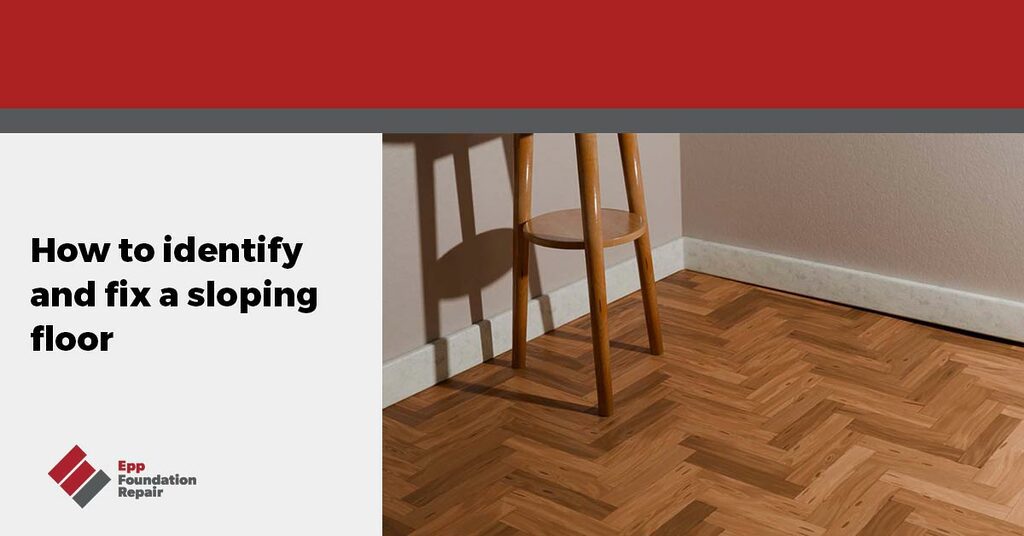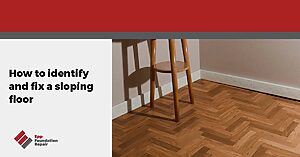Are you tired of furniture sliding to one side or doors constantly sticking? These are common signs that your floor may be sloping. A sloping floor can not only be frustrating and inconvenient, but it can also indicate a larger issue with the structural integrity of your home. As a homeowner, it is important to know how to identify and fix a sloping floor before it becomes a serious problem. In this blog post, we will go over what causes floors to slope, how to identify if your floor is indeed uneven, and steps you can take to fix the issue with the help of an experienced foundation repair contractor.
What Is a Sloping Floor?
Over time, floors may become unlevel. A sloping floor is when a floor begins to tilt in one direction. One key difference between a sloping floor and a sagging floor is that random dips characterize a sagging floor, whereas a sloping floor has a relatively even slant.
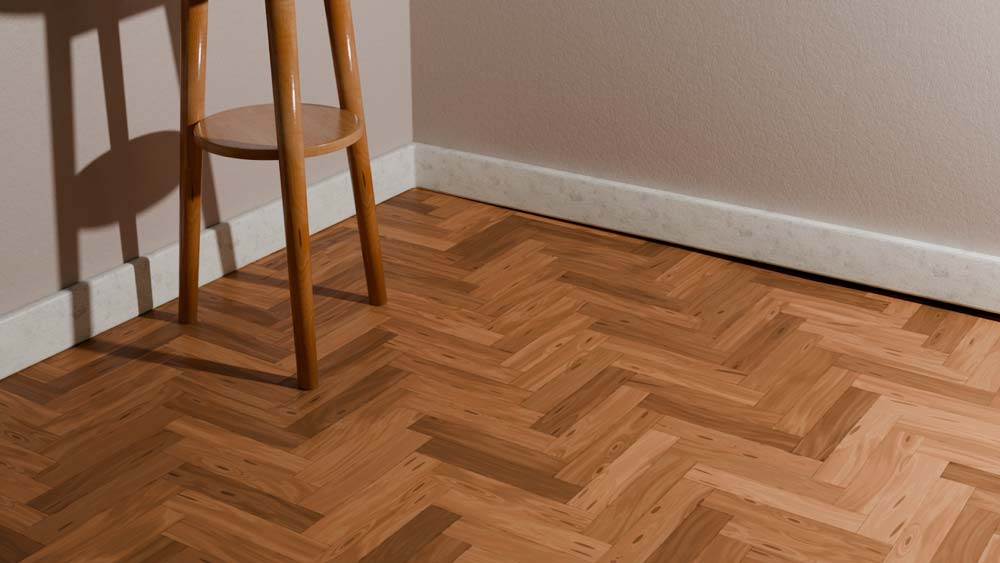
How Can You Tell If Your Floor Is Sloping?
Try using one of these three easy methods to check if your floors are sloping, using tools you likely have lying around the house.
- Rolling Test: Find a smooth, round object and place it on the area you suspect may be slanting. We recommend something like a marble or a golf ball. If it rolls independently – without you pushing it – then your floor is sloping.
- Leveling Tool: Place a level, preferably a carpenter’s level, about four to eight feet long, on different parts of the floor where you suspect sloping. If the level does not lay flat on the floor or the bubble is off-center, again, your floors are sloping.
- Laser Test: For this test, you will need a laser level, a marker, and a consistent measuring instrument like a wooden ruler, a box, or a block. Place the laser level in the center of your floor. Then, take your measuring instrument and set it up against the wall. Mark where the laser hits the instrument. Repeat this process four to eight times around the room, marking where the laser hits the instrument each time. If the laser hits multiple spots on the instrument, then your floor is sloping.
It often happens that a sloped floor is just one sign of a foundation problem. Take a minute and see if you have noticed any of these other issues, in addition to an uneven floor:
Sticking doors and windows.
Sloping floors can be a symptom of your house’s framing becoming unlevel. If this is the case in your home, you may also have noticed that the doors and windows are getting harder to open and shut.Gaps between the floor and the baseboard.
As a floor continues to slope, it will cause the floor to separate further from the baseboard in part of the room. The wider the gap, generally, the more severe the problem is.Cracked wall, floor, or ceiling.
A crack in a wall, floor, or ceiling can signify a structural issue in your home. That same structural issue may also be causing the floor to slope.Leaning chimney or porch.
If your chimney or porch is pulling away from the house, this could be a sign there’s something wrong with the foundation.
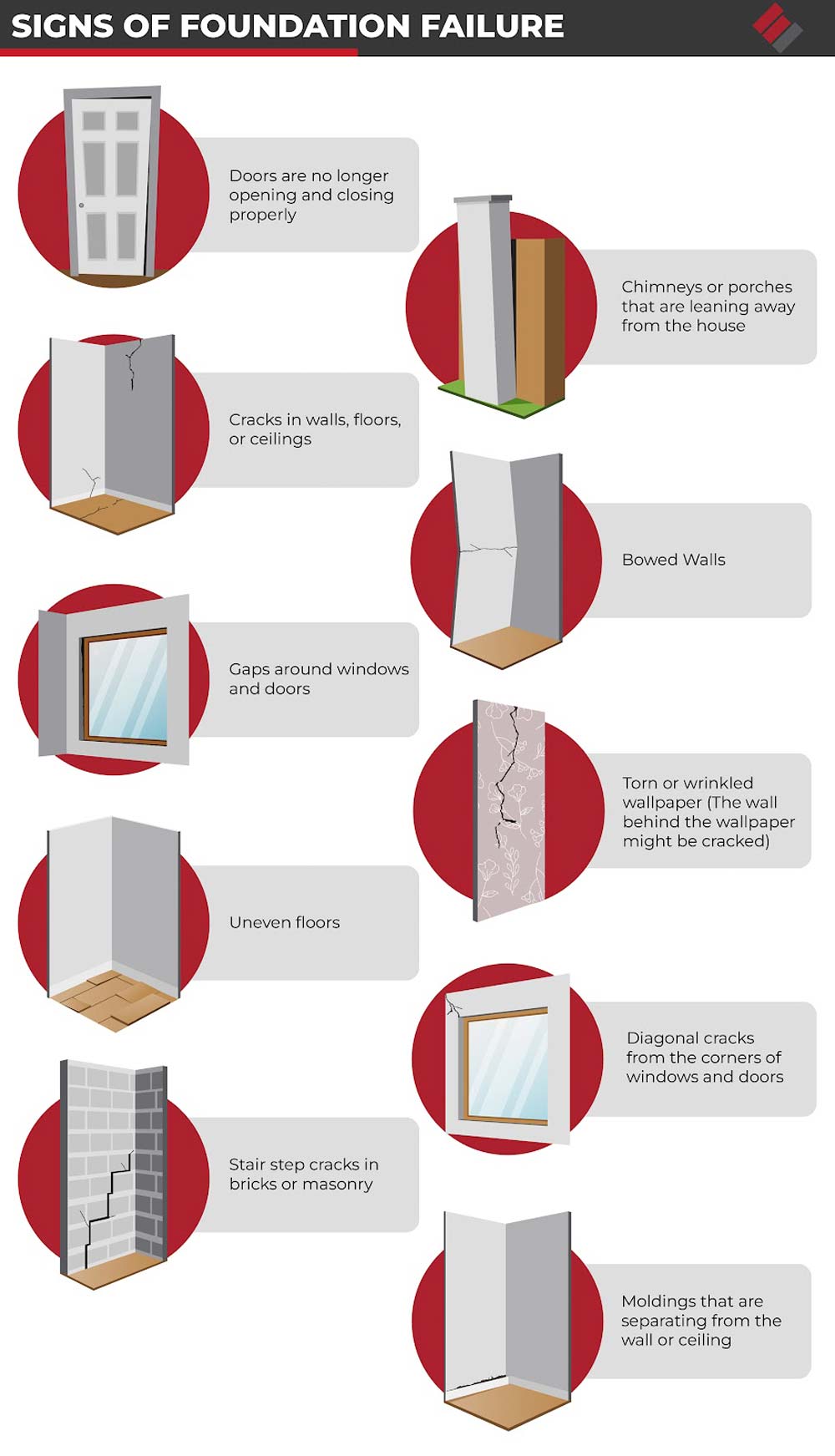
Is a Sloping Floor Normal, or Is It a Cause for Alarm?
While many may attribute sloping floors to an old home’s charm, experts know those sloping floors are usually a sign of trouble below. Unless a floor was purposefully built with a slant, such as to help with water drainage, you should always monitor and investigate the cause of your sloping floor. Doing so will help you determine the type of repairs your home will need and catch any threatening problems early, saving you time and money.
What Can Cause a Floor to Slope?
There could be many reasons your floors are sloping, but we have simplified them into five major categories.
Subflooring Issues
If you have a crawl space foundation, wooden subfloors are susceptible to bowing, rot, and collapse when exposed to moisture and pests. If your subfloor is damaged, it could cause the floor to slope.Weakened Window Frames
Common in older homes, window frames in supporting walls can weaken under the weight of the floors above them. So, if you have noticed that the floor is slanting in the same direction as the basement window below it, you may have discovered the culprit of the slope.Damaged Floor Joists and Sills
Floor joists and sills are part of your home’s structural support system. Like the subfloor, moisture and pests can also negatively impact joists and sills. They could also have been poorly designed or installed incorrectly. If only certain areas in one room have sloping floors, or only the ground level of a multistory home has slanted floors, then you should check your floor joists and sills.Foundational Problems and Uneven Home Settling
The foundation of a home can shift and crack due to expanding and contracting soil, poorly prepared soil, or even poor construction methods. And while it is natural for homes to settle, problems occur when they settle unevenly. That means one side of your home is sinking faster than the rest. These problems will cause the slant in your floor and some of the other issues we mentioned earlier, like sticking doors and gaps between the wall and the floor. Uneven settling of a home and foundational cracks pose significant risks to the safety and integrity of your home, thus requiring immediate attention.
What Are the Benefits of Fixing Sloping Floors?
Fixing a sloping floor adds value to your home, safety, and peace of mind. Whenever it comes time to sell your home, a level floor provides potential buyers with a sense of security since they are not worrying about potentially expensive repairs down the road, helping you, as the seller, to receive higher bids.
More important, though, is the peace of mind of knowing that your home’s foundation is sound. Your home is one of the biggest investments you will likely make, so it is important to care for its longevity.
Lastly, the sooner a problem is addressed, the easier and more affordable it is to fix. If you learn your home is settling, supporting the foundation in the early stages is cheaper than waiting until the problem gets worse.
How Do You Fix a Sloping Floor?
To fix a sloping floor, start with these basic steps:
- Inspect your floor.
Using one or more of the testing strategies mentioned earlier, take a full inspection of your home and note any areas where sloping occurs. - Assess the cause.
Based on where the problematic areas are, use the information in the previous section to determine where the source of the problem is. That includes inspecting your subfloor, floor joints, sills, and foundation. You can begin making a plan if you notice any signs of moisture, damaged joints, or cracks in the wall or ceiling. - Make a plan.
Now that you know the source of the problem, you can determine the best way to fix it. While some homeowners may be able to tackle certain repairs, like a damaged subfloor, we recommend contacting a foundation repair professional to fully assess the cause of your sloping floors and provide the safest solution for your family.
After assessing the full scope of the integrity of your home, a foundation repair company will determine the best method for restoring your home. Some popular methods include the following:
House Leveling Solutions:
Push and helical piers stabilize settling foundations permanently by connecting your foundation to stable soil and lifting your home to the proper level.Basement Wall Repair:
If your basement walls are cracked or bowed, causing your floors to slope, a specialist may recommend carbon fiber straps or wall plate anchors and supports along with epoxy crack repair.
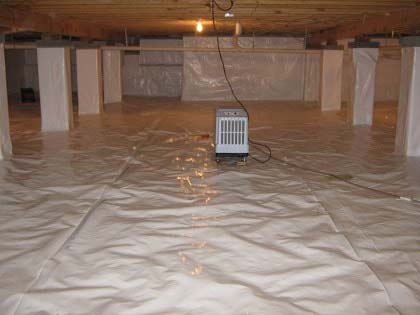
Crawl Space Repair:
A professional will likely recommend encapsulating your crawl space to prevent moisture from affecting your floors. And if you have any damaged floor joists, crawl space support jacks may do the trick.
Of course, this is not an exhaustive list. Every home’s situation is different and requires careful consideration. Contact us today and schedule an inspection. We serve areas in Nebraska, Iowa, Kansas, and Missouri. We will help you determine the best step forward.

